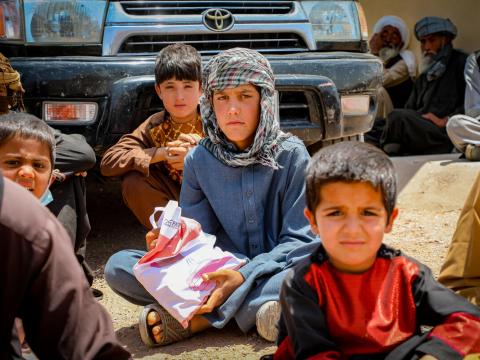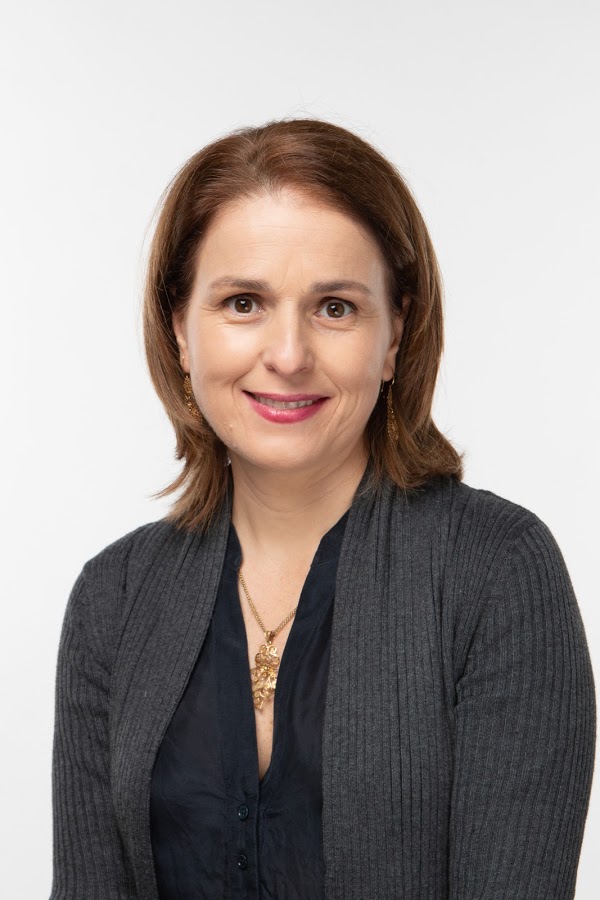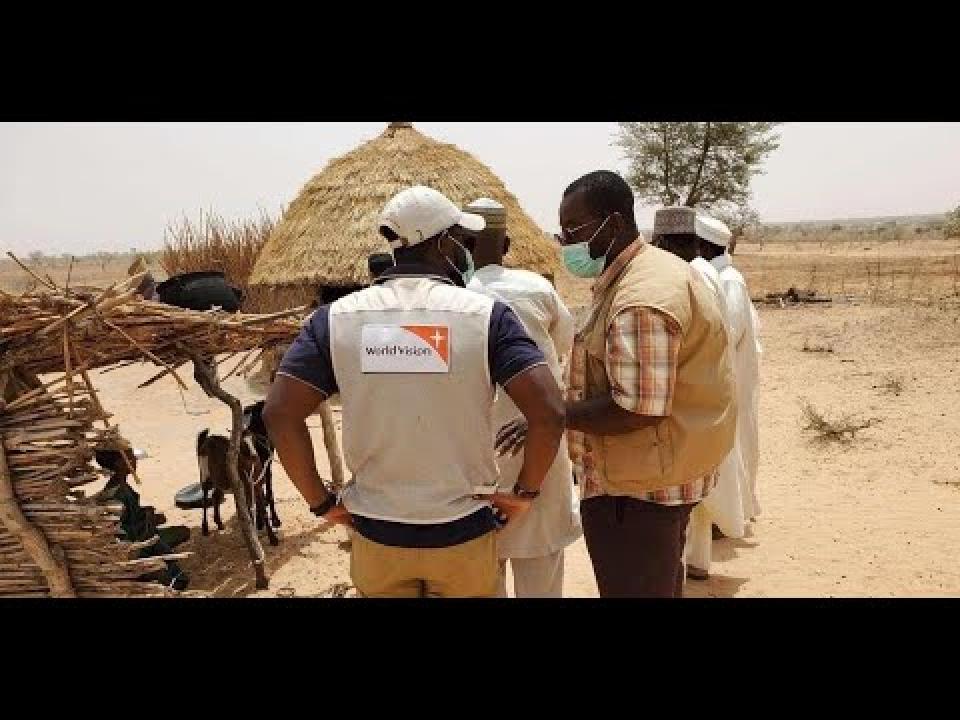
As we welcome the UN Global Humanitarian Response Plan, much more still needs to be done
By Isabel Gomes, World Vision’s Global Director, Humanitarian Operations
Today, the United Nations will launch the third update to its Global Humanitarian Response Plan (GHRP) to the COVID-19 Pandemic. This Plan is a critical document for the international life-saving response to the pandemic, aggregating relevant COVID-19 appeals from multiple agencies, like WFP, UNICEF, UNHCR and others, and an important framework for World Vision to influence, as well as to align with, to ensure the most vulnerable children are protected.
The GHRP targets COVID-19 preparedness, prevention, mitigation and response in countries most vulnerable to the pandemic and least able to respond – countries experiencing existing humanitarian crises, countries hosting vulnerable populations including refugees and migrants, and countries experiencing significant risk to development gains due to the direct and indirect impacts of COVID-19. It is the primary plan used by many governments and multilateral donors to inform their decisions for resource allocation, and it guides global response implementation.
World Vision directly, and together with IASC partners SCHR and ICVA, engaged in the development of all three iterations of the Plan since March, providing feedback, data, evidence, research and analysis from our field programmes. I was pleased to see our work reflected in a number of key areas, which I hope help to strengthen the overall global response to children’s needs. A few examples include:
- Ensuring a focus on children as a highly vulnerable group and recognising the indirect impact COVID-19 is having on children’s survival, rights and protection from violence.
- The use of the IASC Gender and Age Marker, ensuring COVID-19 response is globally informed by gender-responsive and age-specific analysis.
- Improving flexibility and transparency of funding flows, and increasing direct funding to NGOs.
In particular, I welcome the GHRP July Update for its inclusion of a US$300m request for direct funding to non-government organisations (NGOs), and a US$500m request to specifically address exponentially increasing hunger. I was also pleased to see the use of World Vision’s data and analysis of children’s needs, as well as examples of the impact we have been able to collectively achieve since the start of the pandemic.
Despite this progress, the GHRP continues to demonstrate gaps in equitable resourcing, especially for NGOs and local actors. Bilateral donor funds have disproportionately been allocated to UN agencies, and while there was an increase in resources for NGOs through the UN OCHA Country-Based Pooled Funds, this primary mechanism for funding NGOs and local actors still allocated 40 per cent to UN agencies. Requests for greater transparency of funding flows from some UN agencies were not included in the GHRP at all, and the WHO reported only 2% of its received funding will be implemented by frontline NGOs. In addition, based on our experience, inclusion of NGO inputs and funding requests at country level varied significantly, working well where OCHA-led cluster systems were already in place, but generally excluding NGO engagement in those without.
A lot of effort has been made to address these inefficiencies at an unprecedented speed. Having worked on these issues for over 20 years, I can say without a doubt that the level of collaboration between UN agencies and NGOs, as well as the genuine desire of many to make improvements in the system, has been exceptional.
Yet, collectively we continue to face the same challenge that’s out of our hands – insufficient funding to save the most vulnerable.
The GHRP financial request figure from the May Update (US$7.48Bn) is only 23.3% funded. This extreme shortfall means that the UN and NGOs cannot effectively prepare for, prevent, mitigate or respond to COVID-19 in the countries at the greatest risk, with the least capacity to respond, and home to the most vulnerable children.
As cited by the Emergency Relief Coordinator, Mark Lowcock, the cost of protecting the poorest 10% of the world from the worst effects of the pandemic is less than 1% of the stimulus package wealthy countries have put in place to protect their own economies. Aside from the moral argument of wealthy nations needing to step up and support weaker nations, there is also one of self-interest – the virus knows no borders and as long as it exists in one corner of the world, every country is at risk. The need for solidarity and collective action in the face of this pandemic couldn’t be clearer.
This is why we will continue to advocate for a better, more effective, efficient and well-funded humanitarian response to children’s needs. In line with the Grand Bargain commitments made by donors and the humanitarian community, we are calling for:
- Donor governments to resource the GHRP in full, including the US$300m for NGOs and US$500m for addressing hunger
- Donor governments to resource COVID-19 response using an approach that maximises the efficiency of unique mandates and capacities, for example funding UN agencies for shared services and maintenance of core pipelines, and funding NGOs for direct implementation
- Use of harmonised approaches to humanitarian financing across UN agencies and partners in line with the IASC Proposal for a Harmonized Approach to Funding Flexibility in the Context of COVID-19, including ensuring linkages between the GHRP funding to existing programming; better budget flexibility of up to 20% within approved budgets to allow for COVID-19 adjustments; and allowing release of funds for pre-financing or simplified release of funds to scale up of programmes, among others
- Countries with the greatest capacity to resource COVID-19 response to prioritise foreign assistance for fragile contexts – for pandemic response and to meet existing humanitarian needs
- The international community and specifically country-level COVID-19 response plans to prioritise the needs, rights and protection of children, including strengthening systems to prevent and respond to violence against children
- The UN, NGOs and other implementing actors to prioritise people-centred and community-based approaches, including those that include and collaborate with faith actors and communities
- The continuation of coordination and collaboration across the nexus of humanitarian and development frameworks and funding packages to ensure sustainable COVID-19 prevention, response and recovery
1 GHRP Priority Countries: HRPs: Afghanistan, Burkina Faso, Burundi, Cameroon, CAR, Chad, Colombia, DRC, Ethiopia, Haiti, Iraq, Libya, Mali, Myanmar, Niger, Nigeria, oPt, Somalia, South Sudan, Sudan, Syria, Ukraine, Venezuela and Yemen; RRPs: Angola, Burundi, Cameroon, Chad, DRC, Egypt, Iraq, Jordan, Kenya, Niger, Nigeria, Lebanon, Republic of Congo, Rwanda, South Sudan, Uganda, Tanzania, Turkey and Zambia; Venezuela RMRP: Argentina, Aruba,* Bolivia, Brazil, Chile, Colombia, Costa Rica, Curaçao,* Dominican Republic, Ecuador, Guyana, Mexico, Panama, Paraguay, Peru, Trinidad and Tobago, and Uruguay; Other: Bangladesh (JRP), DPR Korea and Iran; At risk: Côte d’Ivoire, Ecuador, Guinea, Indonesia, Malawi, Nepal, Northern Triangle of Central America (El Salvador, Guatemala and Honduras), Papua New Guinea, and Small Island Developing States in the Caribbean and the Pacific.

